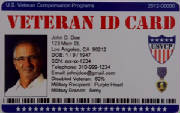|
|
|
|
|
|
3. Consider what you want to claim. Many Servicemembers and veterans
have been told they should go through their service medical records and claim everything they have ever had or been treated
for. While you can do that, it is likely to significantly increase your frustration level, result in unnecessary examinations,
and slow the process without getting added benefits. You should not claim acute disabilities or illnesses you had in service
unless they left a residual. For example, if you got the flu in service and got over it, the claim will be denied. On the
other hand if you broke your leg and recovered from it you should claim that because the fracture, if found on x-ray, can
be service connected. While it might only warrant a zero percent evaluation now, if you develop arthritis at the site later,
you are covered. Don’t claim things like personality disorders, baldness, the fact that you wear glasses, or similar
kinds of things because they are considered “constitutional or developmental abnormalities” that you would have
gotten whether or not you were in service. The law doesn’t permit payment for these. Don’t claim lab results like
hematuria (blood in the urine) or high cholesterol. We don’t pay for those either. On the other hand, you should claim
pseudofolliculitis barbae (a skin condition that affects some black people).
4. If private providers have treated you, get
the records and send them to us. While the application you fill out does offer the opportunity to sign a release and we will
request the records for you, we cannot compel providers to send us records nor can we pay for them. It is my experience that
many times–maybe even most–when VA sends a release a private provider, the provider ignores the request. If the
provider does respond, many times they will ask that we pay them in advance for the records. In either case, we will have
to write to you and tell you that if you want the records considered you will have to get them and send them. In the worse
case this can add two to three months to the process.
5. Show up for your examinations.
6. The first thing you will get from VA once you
file your claim is a lengthy letter commonly referred to as a “VCAA letter.” This is a letter required by the
law that tells you what we will do, what you will be expected to do, and in very general terms tell you how we will decide.
The letter may also include specific requests from your local regional office for information. Read it carefully for specific
requests for information from us. Finally, the letter offers the option of completing an attachment telling us you have no
more information. If that is the case, complete the form and return it immediately. If you don’t and you have no more
information, we will wait for 30 days before proceeding for no good reason. Even if, during the course of working the claim
you do get additional information you can always submit it when you get it.
7. When you get your decision, read it carefully.
It will have attached to it the text of the actual rating decision explaining why we decided what we did. If you think our
decision didn’t consider something, didn’t cover a topic, or is wrong, call your representative right away. If
we have made a mistake, we would rather just fix it now than get involved in a lengthy appeal that isn’t terribly satisfying
for you or VA.
Final Note: VA exists to serve those who served and their survivors. I have worked for VA for over 36 years and the
overwhelming majority of people who work for VA are committed to the mission. If we are not clear or you think we have made
a mistake, let us know so we can both fix it, and provide a learning opportunity for our staff to serve other Veterans better.
After serving in Vietnam as an Infantry Platoon Leader with the 101st Airborne Division, Thomas Pamperin began his career with VA in 1974. Having risen through the ranks, he is currently VA’s Deputy Under Secretary for Disability Assistance and is responsible for oversight of Compensation Service, Pension Service, Benefits Assistance Service, Fiduciary Service, and Insurance Service in the Veterans Benefits Administration. |
|
|
Submit A Compensation Tip
|
|
|
|

